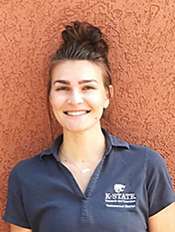
People often wonder why we recommend seeding cool-season grasses such as tall fescue and Kentucky bluegrass in the fall. It would seem that the spring would be the more natural time for seeding because the entire growing season is available for the grass to become established before the turf has to deal with winter. There are a few reasons that tend to make fall seedings more successful.
The soils are warmer in the fall. Warm soils mean less time required for germination and growth, so the grass becomes established more quickly. I have seen tall fescue seeded in the last week of August come up in four days. Now, you had to be on your hands and knees to see it, but it was up. Tall fescue seeded in the spring may take well over a week to come up and the time required to become established is much longer.
Weeds are less of a problem in the fall. The major weed problems in the fall tend to be the broadleaves such as chickweed, henbit, or dandelion. Turf seeded in early September is usually thick enough by the time these broadleaves germinate that often there is not much weed invasion. Even if there is some invasion by broadleaves, the turf should be mature enough by early November that mild broadleaf herbicides can be applied.
In the spring, our major weed problems are the annual grasses such as crabgrass. Since the spring-seeded turf is slow to mature, there are often thin areas that are easily invaded by these grassy weeds. If this invasion occurs, the weeds are better adapted to our hot, summer conditions than our cool-season grasses and so the weeds tend to take over. The number of chemicals that can be used on young turf is limited, and so these grasses become more of a problem. One of the preemergence herbicides that can be used on young grasses is dithiopyr (Dimension). It is found in Hi-Yield Turf and Ornamental Weed & Grass Stopper and Bonide Crabgrass & Weed Preventer and can be used on tall fescue, Kentucky bluegrass, and perennial ryegrass two weeks after germination.
Summer is the hardest time of the year for cool-season grasses, not the winter. Summertime is very difficult because our cool-season grasses do not have the heat or moisture stress tolerance that our warm-season grasses such as buffalo, zoysia, and Bermuda have. Therefore, they tend to become weakened in the summer which makes them more susceptible to disease and other stresses. Spring-seeded cool-season grasses are less mature and therefore less able to tolerate these stresses.
Seeding cool-season grass in the spring can be successful but is more difficult to pull off than fall seedings. If you have a choice, always opt for seeding cool-season grasses in the fall.
Lauren Fick is the Horticulture Extension Agent for the Cottonwood Extension District. If you have questions, she can be contacted by e-mail at [email protected] or by phone at 785-628-9430 or 620-793-1910.






